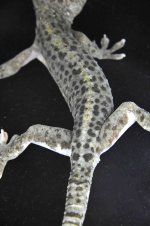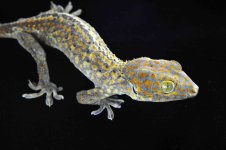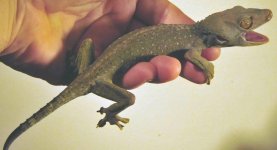billewicz
New member
We'll see how this little one turns out. It was originally described as Axanthic. I like Green Granite but I think that the dark areas are pied splotches and could lighten up considerably over time. It is one of a couple that came in this last group that I've never seen before.
Now, assuming I can get these two new guys pictured, turned around and healthy, does anybody see a striped Tokay in the distant future?:lol:
Now, assuming I can get these two new guys pictured, turned around and healthy, does anybody see a striped Tokay in the distant future?:lol:



















